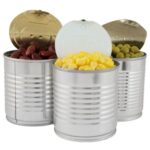
Best Ever Focaccia
Adapted from Paul Hollywood's "Ultimate Focaccia" recipe in his new cookbook, "Bake". Hollywood proclaims this is a favorite and one he takes to many dinner parties he attends.


Adapted from Paul Hollywood's "Ultimate Focaccia" recipe in his new cookbook, "Bake". Hollywood proclaims this is a favorite and one he takes to many dinner parties he attends.

This delicious orange flavored ice cream soda with its boozy kick is perfect for those hot summer days, or any day for that matter.

While limited attempts were made by some households to preserve foods using the Appert Method, it was the creation of the Mason jar and its sure-on lid that made home canning popular .

Belgian waffles are thicker and lighter than their American counterpart, and usually served with berries and whipped cream

Bread is one of the oldest, most important, yet perhaps the most presumed foods in the world. In its simplest form, bread is wheat flour and water formed into a shaped dough and baked.

Over the past two centuries, the worldwide marketplace has seen the development of hundreds of soft drink brands. While many have enjoyed lasting success, many more have fallen to the wayside.

1795 Nicholas Appert discovered how to preserve foodstuffs for long period of time, although it took 14 years of trial and error. Yet it took another 50 years before anyone knew why the Appert's method worked.

This cornbread recipe has been passed down by my mom's family for three generations. This is real…

A Short tutorial demonstrating how to cut watermelon

Eggs Saratoga, otherwise referred to simply as scrambled eggs with cream cheese and chives, is one…

The cherry-flavored retro soda, created in 1974.

"All the sugar and twice the caffeine!"

"A good burger is worth its weight in gold." —Mark Bittman
 Hi, I’m Monte Melugin, executive chef, food writer, consultant, artist, and creator of GrubAmericana, a website designed exclusively around American born foods–their history, legends, and availability. We’ll also provide some related recipes you can easily make in your own kitchen.
Hi, I’m Monte Melugin, executive chef, food writer, consultant, artist, and creator of GrubAmericana, a website designed exclusively around American born foods–their history, legends, and availability. We’ll also provide some related recipes you can easily make in your own kitchen.